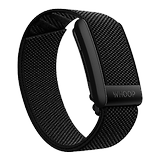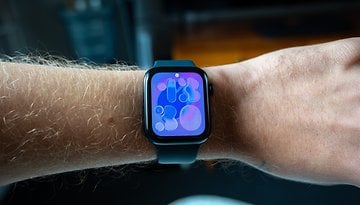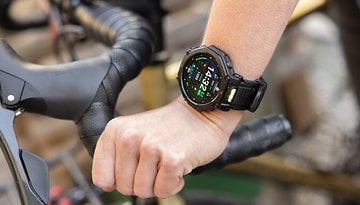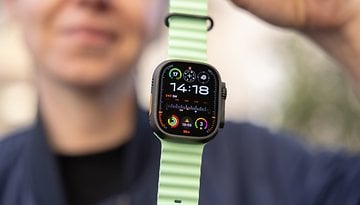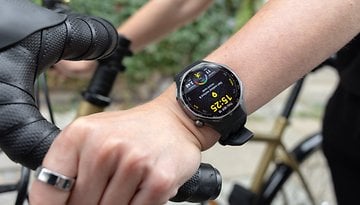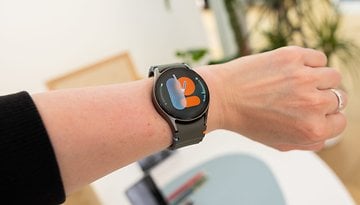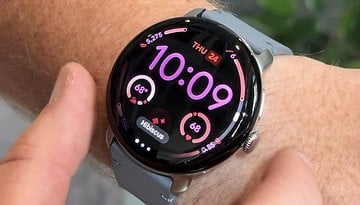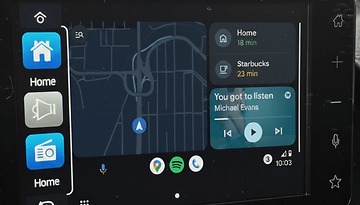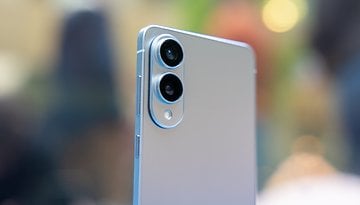Whoop 4.0 Review: The World's Smartest Fitness Tracker
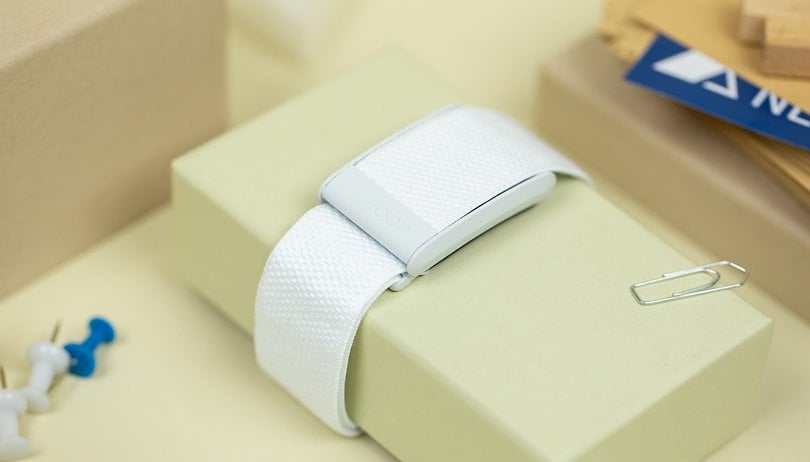

The Whoop 4.0 operates quite differently compared to ordinary fitness trackers. In fact, it's much more of a fitness tracker than any of the Fitbit Charges currently available, which have evolved into slim smartwatches. Read our review to discover why the Whoop 4.0 stands out in numerous ways and how ChatGPT enhances it to be the world's smartest fitness tracker.
Good
- It can be worn in various ways
- Comprehensive analysis functions
- ChatGPT's integration is more than just a toy
- Accurate stress analysis
- No display
Bad
- Does not support chest straps
- Long-term expensive subscription model
- No display
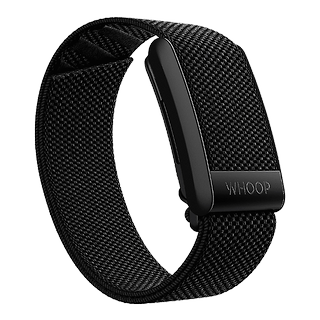
In a nutshell
The Whoop 4.0 is designed to answer two key questions about your fitness routine: Are you exercising correctly, and are you recovering adequately? It provides quantified feedback to help you balance your exertion and recovery. The device uses straightforward parameters and presents the data in easy-to-understand charts within its app.
However, meeting its goals can be challenging. If your job doesn't involve much physical activity, you'll need to put in extra effort during your spare time to achieve your exercise targets.
For example, three hours of intense exercise burning over 1200 calories only scores 13.9 out of 21 points. Also, the sleep goals, which sometimes exceed ten hours, can be tough to reach, especially on weekdays. I find it unrealistic to go to bed as early as 8:30 p.m. voluntarily.
Recently, Whoop has significantly upgraded its fitness tracker with a substantial update that introduces three major new features. First, it now includes a stress measurement function. Second, there's the ability to create your own workouts. And third, it offers an AI coach powered by ChatGPT.
Read on to find out why these enhancements have led us to elevate the Whoop 4.0's rating to 4.0 stars, a notable increase from our initial assessment!
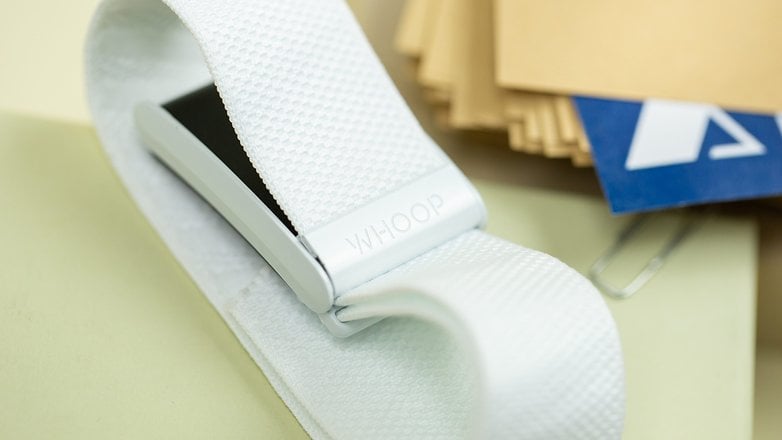
The Whoop 4.0 stands out in several ways, not just in its clearly defined goals. Rather than purchasing the device outright, you subscribe to use the tracker. The only items available for direct purchase are various types of "attachments" for your body, such as sports bras and compression shirts.
The subscription model has different pricing tiers: $30 per month for a monthly plan, $25 per month for an annual membership, and $20 per month if you opt for a two-year subscription, totaling $480 over the period. A key benefit is that you'll always have the latest model, provided your contract has at least six months remaining.
Black Friday 2023 promotion at Whoop
From November 20 to November 28, 2023, Whoop is offering a Black Friday promotion where you can save up to 25 percent on your subscription:
- 12-month subscription: only $199 instead of $239 (25 percent discount).
- 24-month subscription: only $384 instead of $359 (14 percent discount).
The two-year subscription costs you only $15 per month, the annual membership is just under $17 per month. The promotion also applies to existing Whoop customers who wish to extend their subscription. Whoop is also offering a 20 to 40 percent discount on accessories, depending on the category—just take a look in the Whoop store!
Design & operation
The Whoop 4.0 is a fitness tracker—and really only that. There are (practically) no notifications, no music control, and not even a display for the time. But the tracker has other strengths—and thanks to the flexible accessory system, the tracker can be attached to the body more flexibly than almost any other.
Pros:
- Chic design with many options.
- High-quality, robust workmanship.
- Comfortable to wear 24/7.
Cons:
- Light fabric wristbands are difficult to clean.
The actual Whoop tracker is about the size of a postage stamp and about half an inch thick. There are attachment points on both sides of the tracker for the manufacturer's accessory kit. The wristbands can be swapped in a few seconds. On a positive note, the tracker is completely protected by the wristband and clasp when worn on the wrist.
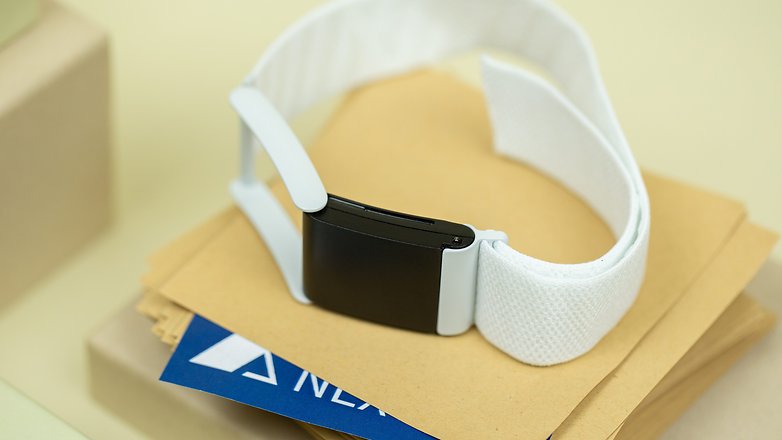
Included is a black wristband, which you can use to attach the tracker to your wrist. You can get numerous stylish wristband alternatives between $40 and $99. We also tested the Ice (light blue) and Arctic (white) versions, which look really chic. However, keep in mind that the light-colored straps will suffer over time if you like to dig in dust and mud.
This is where the alternative wearing solutions are helpful. The wristbands, for example, are also available in a longer version so that you can wear the tracker on your upper arm. This is not only practical if you often get your hands dirty, but also for sports that put a lot of strain on the wrists.
When doing push-ups and the like, the accuracy of the optical pulse measurement often suffers at the wrist, as the blood flow at the wrist is no longer unhindered.
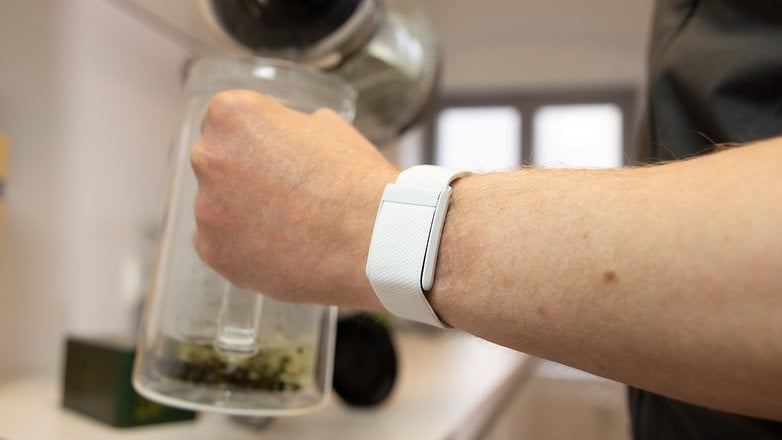
There's not much to say about the operation itself. The fitness tracker really only does what the name promises - namely tracking. There is no display, so you have to do without functions like notifications, music control, etc.—or rather, you can because you have complete peace and quiet.
The only interaction is that the tracker lights up your wrist with a double tap. Green means more than 50 percent battery, while orange and red mean that the battery is running low.
Finally, a vibration motor is integrated into the casing. Its only task is to wake you up, either at a set time or with the help of the so-called Sleep Coach within a period that matches your sleep phases as closely as possible. Since I voluntarily don't give up a minute of my sleep, I only tested the sleep phase alarm once—it works anyway.
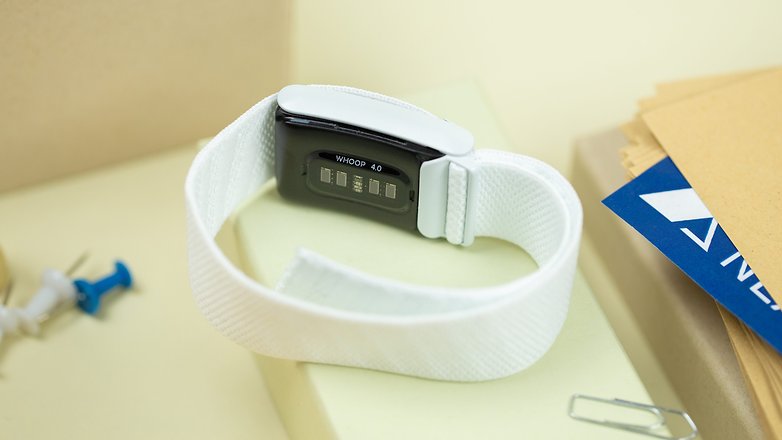
Tracking & Sensors
The Whoop 4.0 offers a compelling array of sensors and condenses the data into two primary metrics: Exertion and Recovery, which you can then use to get specific recommendations for your workout.
Pros:
- Successful and accurate tracking functions.
- Long-term tracking and comprehensive evaluations.
Cons:
- Few options for correlating data.
- Closed ecosystem.
The Whoop 4.0 has an optical sensor on the bottom with a total of five LEDs: three green, one red and one infrared. Four photodiodes analyze the reflected light and thus determine heart rate, heart rate variability and blood oxygen saturation. The manufacturer also installs a thermometer for the skin temperature in the Whoop 4.0.
The tracker generates two values from all this data that will determine your life from now on—or at least dominate the app: Strain and Recovery. Together with Sleep and Overview, these two parameters make up your home area.
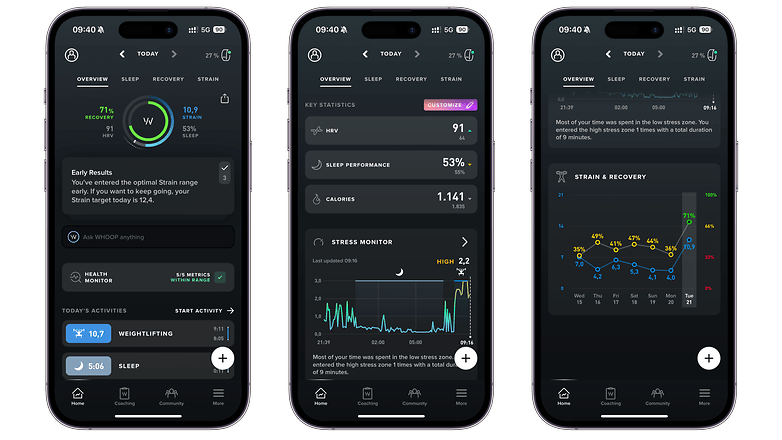
Strain: Load strictly according to pulse
With the strain value, the Whoop 4.0 determines how much you are exerting yourself. Only the data from the pulse sensor over the course of the day is decisive for this. So whether you're doing HIIT workouts or dragging patio tiles around, every activity increases your score. It starts at zero in the morning, and the algorithm's maximum value is 21.
This measurement method has advantages and disadvantages. The advantage is that your individual workload is actually recorded. After all, a 10-kilometer run at 5 minutes per kilometer is a recovery run for a marathon runner, but an impossibility for the untrained. The evaluation is based on how strenuous something is for your personal cardiovascular system.
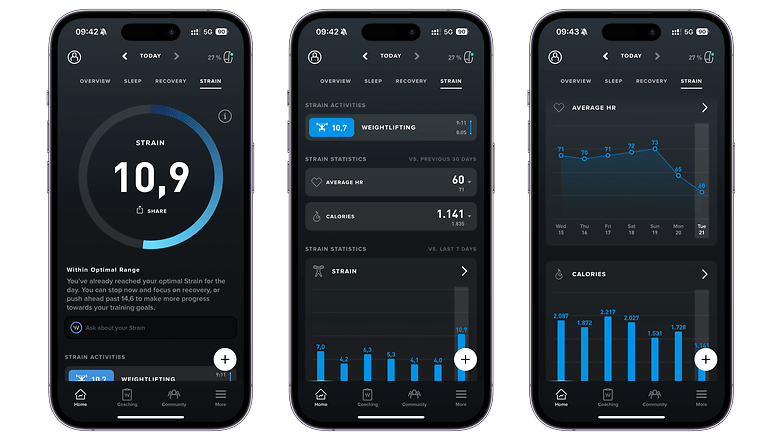
With the Fall 2023 update, Whoop has introduced a correction factor for strength training into its tracking system. Now, short bursts of extremely high intensity during workouts are appropriately recognized.
As a result, even a light strength training session can yield a strain score of 9.6. In contrast, a relaxed 20-minute run during my lunch break scores 11.9. For context, before this update, achieving double-digit values in strength training required a significantly more strenuous effort.
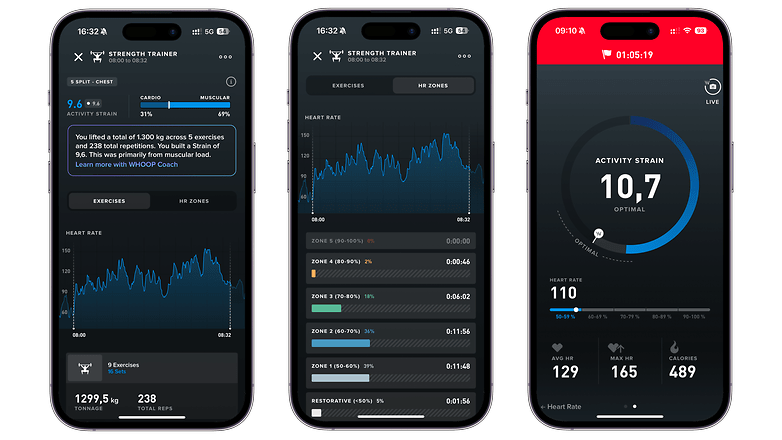
The heart rate measurement itself is pleasantly accurate. During the run just mentioned, the Whoop 4.0 measured a maximum pulse of 172 and an average pulse of 159 beats per minute. With a Garmin chest strap, I got the same values as a second opinion.
However, things look a bit different during strength training. During a shoulder and arm session, I got an average of 122 and a maximum of 158 beats per minute with the Whoop 4.0. The chest strap indicated a maximum of 165 and an average of 126 beats per minute.
- Read more: What do SpO2, resting pulse & co. mean?
In addition to the measurement for the Whoop app itself, you can also use the Whoop 4.0 as a heart rate sensor for other apps. To do so, simply activate the heart rate broadcast in the settings.
Unfortunately, it will still not be possible to connect third-party chest straps to Whoop in 2023. It's a shame, because of the major fitness gadget manufacturers, only Fitbit is otherwise so isolated.
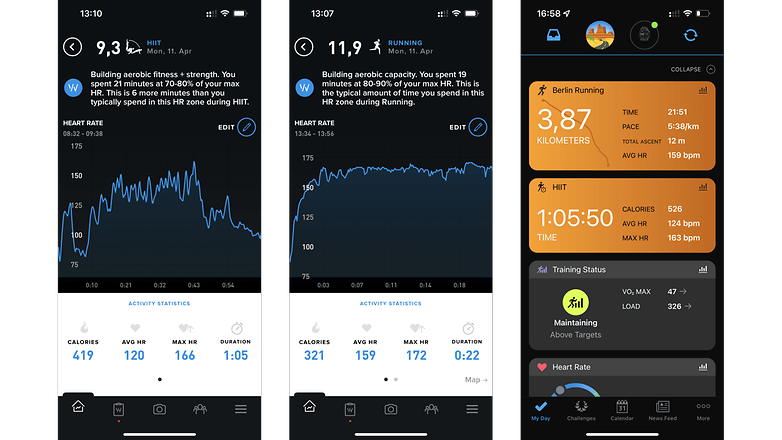
Recovery as a complex factor
The second major area of Whoop concerns recovery. The so-called recovery factor indicates how fresh you are on a scale from zero to 100 percent. The relevant factors here are heart rate variability, daily resting pulse, breathing rate and hours slept. The higher this value, the more you can exert yourself.
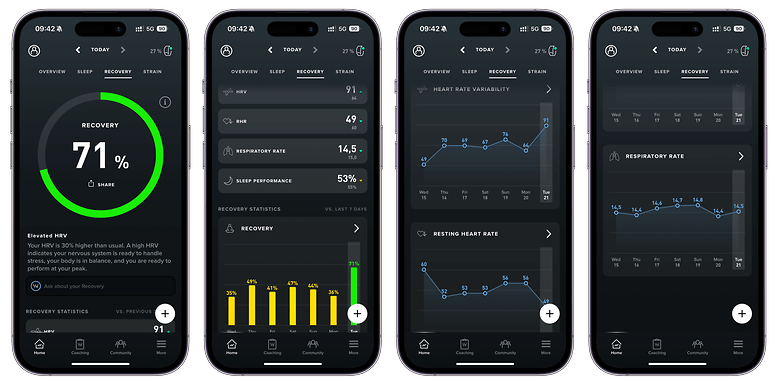
Whether the value is called "Body Battery" (Garmin), "Daily Readiness" (Fitbit), or "Recovery" - at least for me personally, I have certain doubts about its usefulness. If you do sports, you know your body and can judge how much strain is sensible. I find the Health Monitor, on the other hand, more helpful, and I'll come back to it in more detail in a few paragraphs.
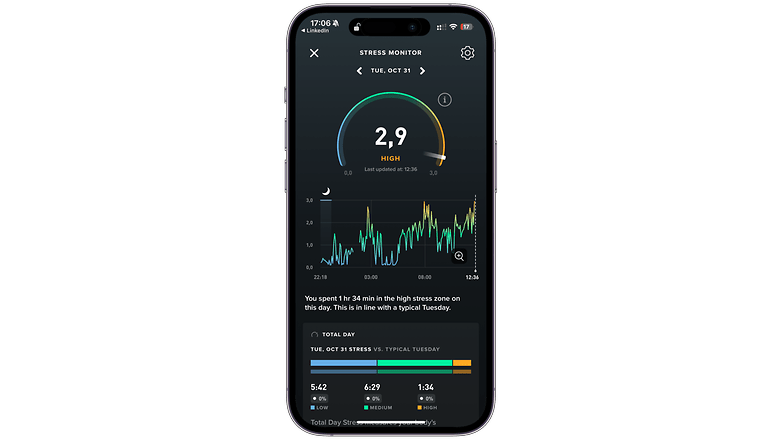
Sleep: Whoop the Groundhog
Finally, Whoop 4.0 tracks your sleep. In the test, the times you fell asleep and woke up matched both my memories and the values from the Garmin Epix 2 and Garmin Fenix 7, which I alternately wore alongside the Whoop. In addition to pure "time in bed", Whoop also measures "restorative sleep", composed of deep sleep and REM sleep, as well as efficiency—i.e. the proportion of restorative sleep in total sleep.
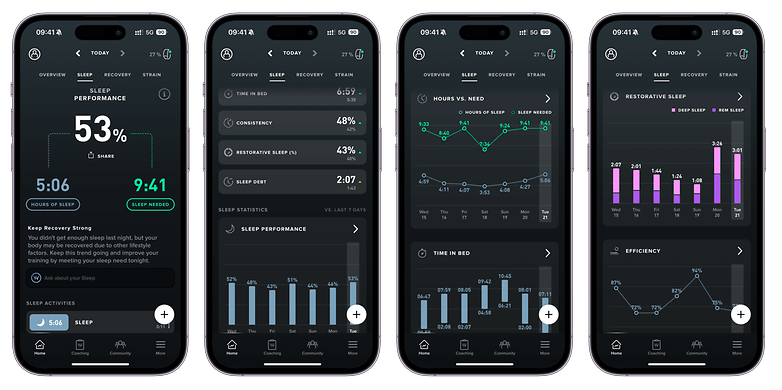
Nevertheless, the Whoop 4.0 uses all this data to generate a percentage value for sleep performance. This is calculated quite simply as the ratio between hours slept, and the sleep requirement determined by Whoop.
However, the sleep requirement is hardly achievable for me—the value is often over ten hours. Since my alarm usually goes off between 6 and 7, I would have to go to bed between 8 and 9 pm—not going to happen. With a small baby, my sleep performance currently fluctuates between 15 and 60 percent.
Health Monitor with skin temperature and SpO2
An interesting feature is the Health Monitor in the app. This monitors breathing rate, oxygen saturation, resting pulse, heart rate variability and skin temperature. If one of the values breaks down, you will receive a warning. This can be quite useful in practice.
For example, if you start an extremely strenuous workout while your skin or body temperature is elevated, you may be hit harder by an incoming infection. By the way, you can export the data from the Health Monitor as a PDF—as well as weekly or monthly performance summaries.
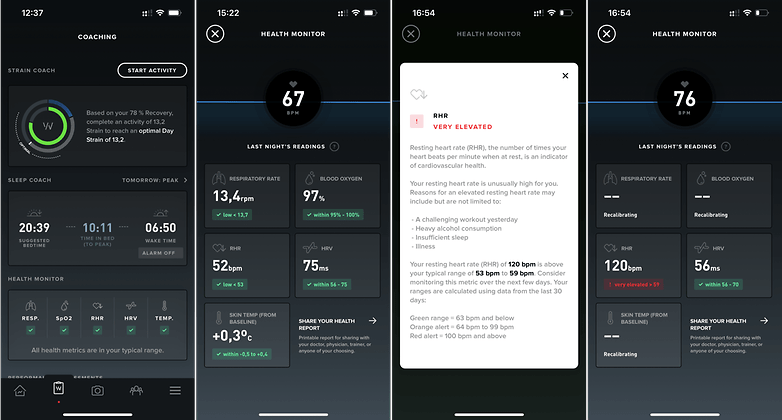
Coaching with AI
What I find more exciting than the aforementioned recovery value itself is the option of logging your own behavior to find out what influences your own energy status or recovery.
You can set up a list of questions in the app, which Whoop then asks you every day when you first open the app. This could be, for example, how many grams of protein you have consumed, whether you have drunk alcohol, had sex, taken creatine supplements and so on.
As soon as you have worked through the questions often enough and answered "yes" at least five times and "no" at least five times, Whoop determines the impact of the respective parameter on your recovery. You can find the results in the coaching area under Insights.
In addition to the very obvious points such as "with 51%+ sleep performance, your recovery is +12% better", you can also correlate your sex life or alcohol consumption with your recovery.
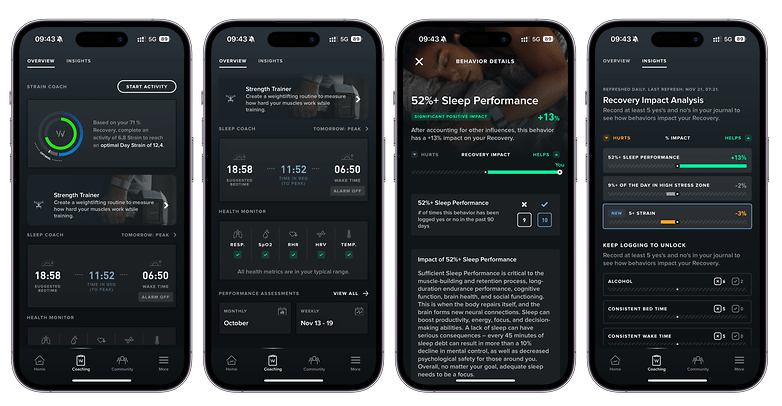
In addition, the coaching section includes an 'Overview' tab, which serves as your hub for training recommendations from the app. Here, you're presented with a value indicating the recommended strain for today's workout. You can then directly start an exercise session with your chosen sport by clicking on 'Start Activity.'
Right below, you'll find the new 'Strength Trainer' feature. This allows you to complete either pre-designed or custom strength workouts. As mentioned earlier, a key benefit of Whoop is its ability to analyze not just cardiovascular strain but also reward short-term, intense efforts.

Further down under "Overview" you will find weekly and monthly performance analyzes with less (weekly) or more (monthly) details on your training and sleep performance or recovery.
That's quite nice—but it's more fun to browse through the data with the AI Coach. Here, you can chat directly with your data and ask questions such as: "How does a good night's sleep affect my recovery?"—and then get an answer backed up by your data.
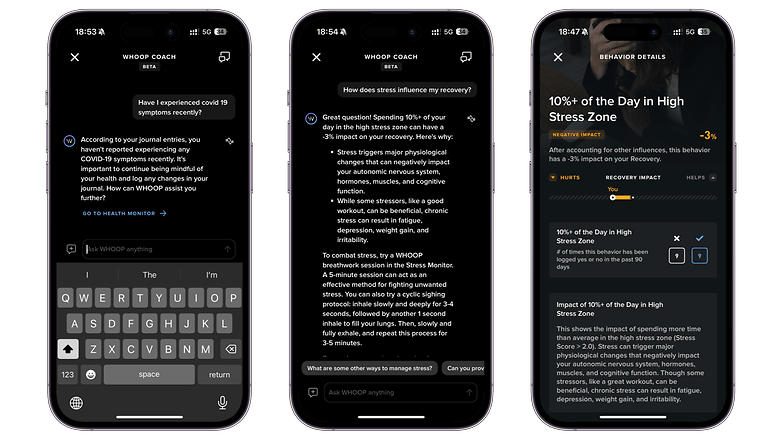
Since the AI coach is still in beta, there are also clear limits here. Although it is possible to receive feedback on individual workouts, such as "More cardio would be better for the chest workout", the ChatGPT coach has no feedback on the specific choice of exercises.
Battery life: charging in a different way
With just under a week, the battery life of the Whoop 4.0 is convincing. I also find Whoop's innovative charging concept very practical, which allows you to never take the tracker off.
Pros:
- Decent battery life.
- Smart charging concept.
Cons:
- No notification when the battery is fully charged.
Whether in bed, during sports, in the shower, or in the sauna: Ideally, you should wear the Whoop 4.0 24 hours a day for seamless tracking. Accordingly, the manufacturer has come up with a charging concept that allows you to wear the tracker even while it is charging. To recharge, you slide a small power bank on top of the tracker.
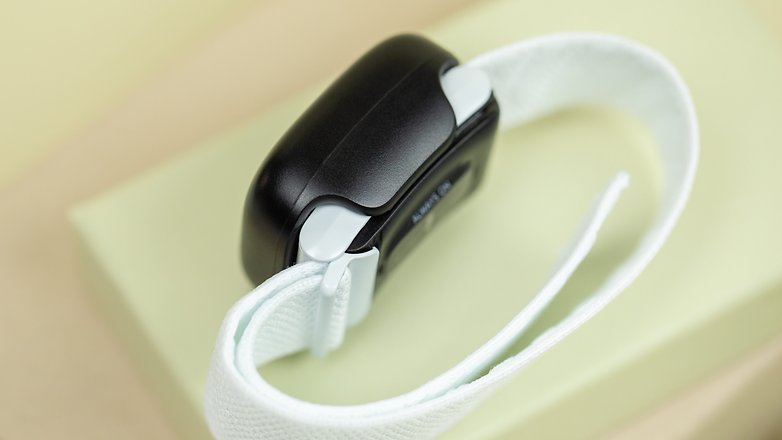
The charging process takes about two hours - and it takes the same amount of time to charge the Battery Pack via the integrated USB-C port. By the way, not only the Whoop 4.0, but also the Battery Pack is water-resistant.
However, I did not dare to take a shower with the charging module attached during the test period. However, I was not afraid of splashing water when washing my hands.
The battery life in the test was about five days. You receive a notification via the app when 20 percent of the battery is left—that is, about one day before the end. As mentioned at the beginning, you can also check the battery status via a double tap on the casing.
Unfortunately, the only way to see whether the battery is fully charged is to look into the app. The LED on the Whoop 4.0 turns green when it reaches 50%.
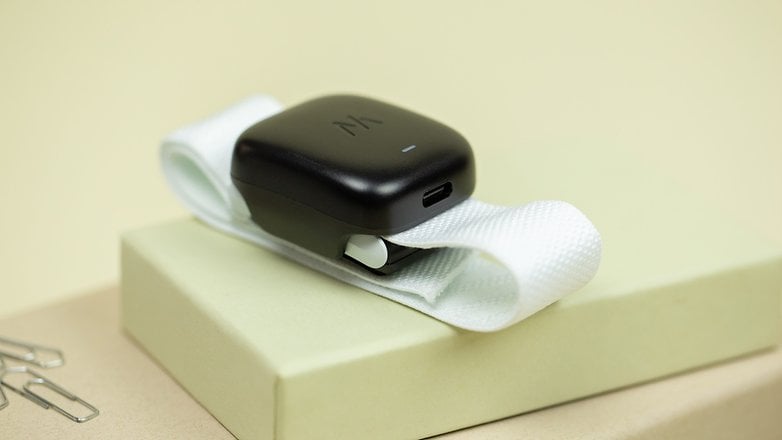
The LED on the top of the Charging Pack also puzzles me a bit. It glows green when you slide the power bank onto the Whoop 4.0, as long as it has power left to charge. However, the Battery Pack does not reveal how much that is. There is also no way to check the charge status, for example by double-tapping the case. But something has to be left for the Whoop 5.0.
Final verdict
In 2023, Whoop has impressively revitalized its two-year-old fitness tracker, the Whoop 4.0. This device continues to provide a wealth of data on your workouts, sleep patterns, and various habits. However, it now goes beyond merely compiling results into PDF statistics, offering direct interaction with this data.
The AI Coach, currently in beta, is an exciting development, indicating the future direction of fitness technology. It aims to fully utilize the vast amount of data collected, addressing a long-standing unfulfilled promise in the fitness tracker industry.
The new Strength Coach and stress measurement features further enhance the Whoop 4.0, making it a more versatile fitness companion. The training plans are well-structured, though they require your smartphone to be within constant reach. The stress measurement tool, particularly in combination with the AI trainer, offers valuable insights.
Yet, there remains a notable challenge: the Whoop 4.0 likely sets expectations too high for the average amateur athlete. For instance, a recommendation like 'Go to bed at 8:45 pm tonight' is well-intentioned, aiming for optimal recovery and fitness so that you're fully rested by 7 am. But, realistically, this is often impractical.
Perhaps the solution is introducing an 'aspiration factor,' a sort of slider to adjust the recommendations between casual and professional athletes' needs.
All in all, the Whoop 4.0 is an exotic fitness tracker and an exciting option for demanding athletes who want to break down their daily routine precisely. However, it really is just a fitness tracker and not a sports smartwatch à la Garmin or Apple Watch.
